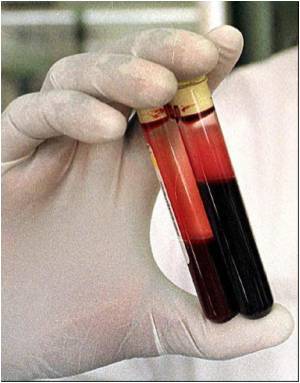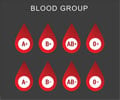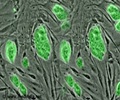An advance towards the development of an anti-thrombotic drug by discovering a way to harness the enzyme thrombin's anti-blood clotting properties has been made by molecular biologists.

Lead researcher Enrico Di Cera, chair of the department of biochemistry and molecular biology at Saint Louis University School of Medicine, said: "Thrombosis is one of the most prevalent causes of fatal disease.
"If we could develop an anti-thrombotic drug that didn't carry a risk of haemorrhage, it would revolutionize the treatment of cardiovascular disease, the leading cause of death in the U.S. and Western world.
"This research carries us closer to that goal."
Blood clotting has long ensured our survival, stopping blood loss after an injury.
On the other hand, if triggered in the wrong conditions, clotting can lead to debilitating or fatal conditions like heart attack, stroke and deep vein thrombosis.
Advertisement
An unusual enzyme, thrombin performs distinct and even opposing functions, acting as a pro-coagulant, pro-thrombotic but also as an anti-coagulant factor depending on which target protein - fibrinogen, PAR1 or protein C - becomes activated in the blood. Researchers studied thrombin to decipher the structure-function code that enables this protein to do so many different things.
Advertisement
Using protein engineering, researchers produced mutations in the enzyme's amino acid sequence, carefully taking out pieces and replacing them, a few at a time, to find the exact locations that influence the function of thrombin.
Once they found these "hot spots," researchers went even further - trying each of the 20 natural amino acids to see which mutation would allow them to turn on and off the pro-coagulant, pro-thrombotic and anti-coagulant functions.
"We asked the question, what if we can take this enzyme and dissociate the functions, allowing only the function we want?" said Di Cera.
In earlier research, Di Cera's team did just that.
They engineered thrombin to promote activity toward protein C - the anticoagulant target protein - and minimize activity toward fibrinogen and PAR1 - the procoagulant and prothrombotic targets.
Di Cera said: "In 2000, we engineered a thrombin mutant with potent anticoagulant properties both in vitro and in vivo and we are moving this mutant to a phase I trial.
"In this study, however, we pressed further. We wanted to optimize this mutant to completely abrogate activity toward fibrinogen and PAR1."
"With this research we optimized the mutant so that there is no clotting at all. Furthermore, we generated a new mutant with exclusive prothrombotic activity, thereby demonstrating that the individual functions of thrombin can be dissociated by replacing a single amino acid in the protein."
The study appears in The Journal of Biological Chemistry.
Source-ANI









